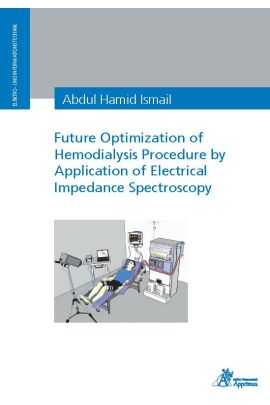Patients with end stage renal disease often require dialysis treatments to remove toxins and restore salt and fluid homeostasis. Years of advances in dialysis technologies have increased the safety and efficacy of treatment. Nevertheless, the improved patient care has not translated into a clear improvement of survival rates. The leading cause of death in this population is cardiovascular-related, and how the treatment is prescribed significantly alter body fluids and composition status. Risks of acute intradialytic hypotension (IDH) and severe valvular and vascular calcification are common during dialysis treatment, and are critical determinants of cardiovascular health. Hence, tools are required to allow accurate assessment of body fluid and solute dynamics during the therapy.
The main contribution of this thesis to the state-of-the-art is the investigation into the feasibility of integrating continuous electrical impedance spectroscopy measurements and physiological modelling into the clinical dialysis procedure to improve adequacy of the treatment. In case of IDH, the results obtained provide valuable information on the underlying mechanisms behind IDH, where potassium- and transcellular-fluid shift into intracellular compartment may play a vital role. Furthermore, impedance measurements combined with other vital signs enable the early prediction of IDH episodes.
The process of calcification inhibition was studied using impedance measurements as well. Serum samples were supplied to a custom-made electrochemical cell and different scenarios were investigated. Impedance data provided insight on the mechanism of calciprotein particle (CPP) formation, a critical determinant of inhibition capacity. A two-step growth of CPP was observed using impedance data, comparable to alternative “gold standard” methods used so far in laboratory. However, the impedance method proved to be significantly faster and much easier.
Finally, focus has been given to physiological modelling of the dialysis process. The model offers a tradeoff between complexity and accuracy. It enables rational choice of some operative parameters as well as pre-planning of dialysis sessions with the target of reducing intradialytic symptoms. Two scenarios were reported, in which the model was slightly modified to answer clinically-relevant questions. This further demonstrates the importance and capacity of such kinetic models.
| Autor | Ismail, Abdul Hamid |
|---|---|
| Lieferzeit | 3-4 Tage |
| Gewicht | 0.256 kg |
| Erscheinungsdatum | 13.03.2020 |
Elektro- und Informationstechnik
Future Optimization of Hemodialysis Procedure by Application of Electrical Impedance Spectroscopy
Kurzbeschreibung
This thesis contributes to the integration of electrical impedance-based methods and physiological modelling for continuous monitoring of body fluid and solutes dynamics during dialysis treatment. The particular focus lies on risk assessment for intradialytic hypotension and ectopic calcification. Bedside tests were developed for routine clinical practice. Impedance methods and appropriate modelling could aid in minimizing dialysis side effects and individualizing treatment prescription.

